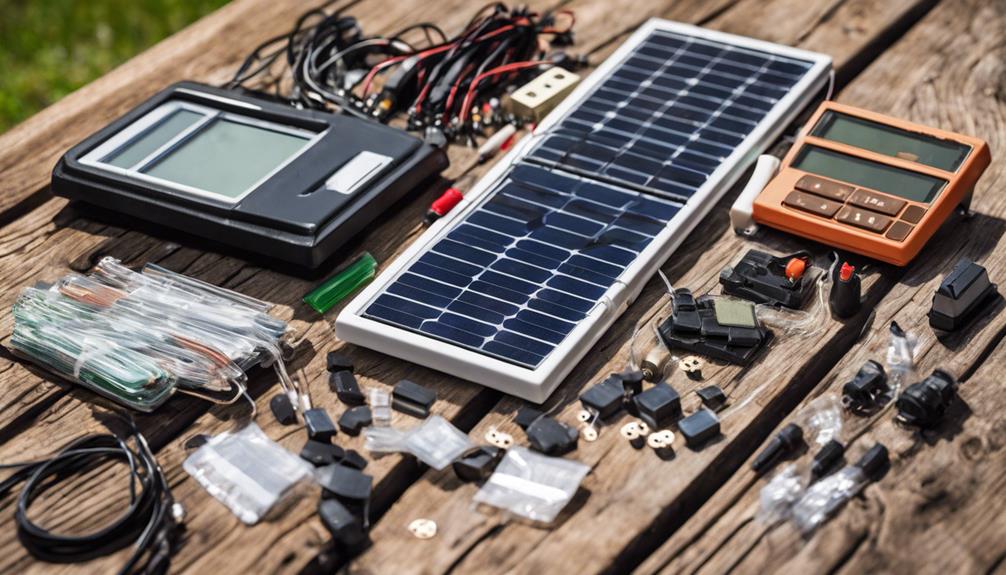
In today’s world, the quest for sustainability has made solar energy an attractive option for many homeowners. Solar panel kits for homes offer a convenient and cost-effective way to harness solar power, reduce energy bills, and lessen your carbon footprint. In this guide, we will explore what solar panel kits are, their benefits, how to choose the right one, and much more.
What Are Solar Panel Kits for Homes?
Solar panel kits for homes are comprehensive packages that include everything you need to install a solar energy system on your property. Typically, these kits come with solar panels, inverters, mounting hardware, wiring, and sometimes even installation instructions or services. Designed for easy installation, these kits empower homeowners to produce their own electricity, making them an increasingly popular choice for those looking to switch to renewable energy sources. They can either be grid-tied, allowing you to sell excess energy back to the grid, or off-grid, providing energy independence.
Benefits of Installing Solar Panel Kits for Homes
One of the most compelling reasons to consider solar panel kits for homes is the potential for significant cost savings. By generating your own electricity, you can drastically reduce or even eliminate your monthly energy bills. Furthermore, many regions offer tax credits and incentives for solar energy systems, making the initial investment more affordable. Beyond financial benefits, solar energy is a clean and renewable resource, contributing to environmental sustainability by reducing greenhouse gas emissions. Additionally, solar panel kits often increase the value of your home, making it a wise long-term investment.
Understanding the Components of Solar Panel Kits
Before investing in solar panel kits for homes, it’s crucial to understand the components included in the kit. The primary element is the solar panels themselves, which convert sunlight into electricity. Inverters play a critical role, transforming the direct current (DC) produced by the panels into alternating current (AC) that can be used by home appliances. Mounting hardware ensures that the panels are securely fixed to your roof or ground, while the wiring connects the various parts of the system together. Some kits may also include batteries for energy storage, enabling you to use solar energy even when the sun isn’t shining.
Choosing the Right Solar Panel Kit for Your Home
Selecting the right solar panel kit for your home involves several key considerations. First, evaluate your energy needs by reviewing your electricity bills to understand your average consumption. This will help you determine the size of the solar system you require. Next, consider the type of solar panels included in the kit. Monocrystalline panels are more efficient but usually more expensive, while polycrystalline panels are less costly but slightly less efficient. Additionally, ensure that the inverter included in the kit is compatible with the solar panels and meets your energy requirements.
Installation Process of Solar Panel Kits for Homes
Installing solar panel kits for homes can be a straightforward process, especially if you opt for a DIY approach. Most kits come with detailed instructions that guide you through each step. The first step is to assess your roof or ground space to determine the best location for placement. After securing the mounting hardware, you will install the solar panels and connect the inverter. If your kit includes batteries, they will also need to be installed and wired correctly. However, if you’re not comfortable with electrical work, hiring a professional installer may be the best option to ensure safety and compliance with local regulations.
Maintenance Tips for Solar Panel Kits
One of the most significant advantages of solar panel kits for homes is their low maintenance requirements. However, regular upkeep is essential for optimal performance. Periodically check the panels for dirt and debris, as these can reduce efficiency. Most homeowners find that a simple rinse with water is sufficient to keep the panels clean. Additionally, it’s wise to have a professional inspection every few years to check for any issues with the inverter or electrical connections. Monitoring your energy output can also help identify potential problems early.
Common Myths About Solar Panel Kits for Homes
Despite the growing popularity of solar panel kits for homes, several myths continue to circulate. A common misconception is that solar panels only work in sunny climates. In reality, solar panels can generate electricity even on cloudy days, albeit at reduced efficiency. Another myth is that solar installations are prohibitively expensive. While the initial investment can be significant, the long-term savings and available incentives can make solar energy an affordable option for many households. Finally, some people believe that solar panels require constant maintenance; however, as mentioned, they are relatively low-maintenance, requiring only periodic cleaning and inspections.
Conclusion: Making the Switch to Solar Panel Kits for Homes
In conclusion, solar panel kits for homes present an excellent opportunity for homeowners looking to embrace renewable energy. With numerous benefits, including cost savings, environmental impact, and increased property value, these kits can be a worthwhile investment. By understanding the components, installation process, and maintenance requirements, you can make an informed decision that aligns with your energy needs. As technology advances and more people recognize the importance of sustainable living, the future of solar energy looks bright. Consider exploring solar panel kits for homes today and take the first step toward a greener, more energy-efficient lifestyle.





